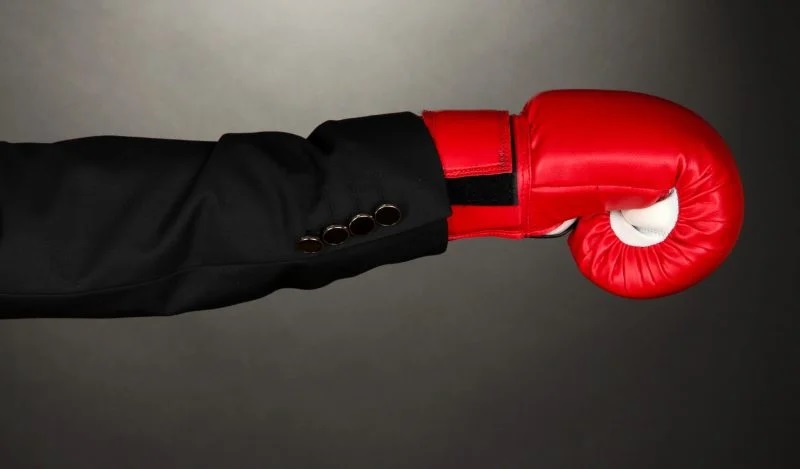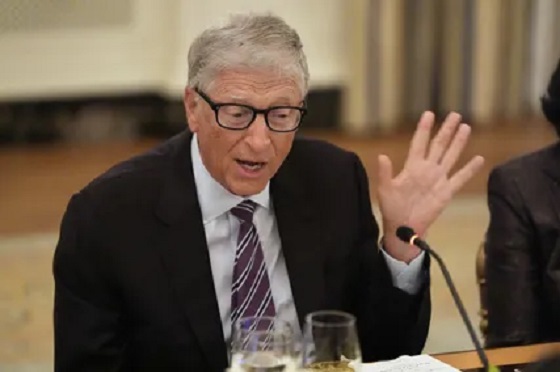Brownstone Institute
We Landed a Major Blow Against the Censorship Leviathan

From the Brownstone Institute
BY
Courts rarely release rulings on federal holidays, but no doubt to drive home the point about how important this case is for our constitutionally guaranteed liberties, Judge Terry Doughty released on Independence Day his 155-page ruling on our request for a preliminary injunction against the government’s censorship regime.
The entire document is worth reading for those who want to dig into the details, but in short, he granted nearly all the provisions in our request, placing strict limits around any communication between government officials and social media companies. If such communications continue, they will be subject to subpoena in our case and could implicate the actors in criminal liabilities for violating the injunction.
One naturally wants to believe that an issue one is involved in is of world-historical importance. But as the judge himself wrote in the decision, “If the allegations made by Plaintiffs are true, the present case arguably involves the most massive attack against free speech in United States’ history.” That, my friends, is a strong claim, but as I have previously argued, an entirely accurate one.
As former attorney general of Missouri, now senator Eric Schmitt, told journalist Michael Shellenberger, “It’s shocking. The level of coordination between senior government officials and senior social media executives is astounding. There were direct text messages from the surgeon general of the United States to senior Facebook officials saying, ‘Take this down.’ It’s just un-American.”
According to Shellenberger, Schmitt called on the Department of Homeland Security’s Director of the Cybersecurity and Infrastructure Security Agency (CISA), Jennifer Easterly, to resign. He also believes that the US Congress should mandate transparency by Big Tech companies. “Jennifer Easterly ought to resign,” he said, “no doubt about that. And I think that the people getting swept up in this now, who were engaged in it, they ought to be exposed, and there ought to be consequences.”
Due to time pressure today with media interviews about this news, I will here quote at length Shellenberger’s report from today quoting me — lazy and kind of weird, I know:
Before Judge Doughty issued his ruling, we also spoke to Dr. Aaron Kheriaty, a plaintiff in the case. Kheriaty is the former director of medical ethics at the University of California Irvine but was fired after he challenged the university’s vaccine mandate in court. “You learn who your real friends are when you go through something like that,” he said. “The whole experience was a bit surreal.”
After taking a national stand against vaccine mandates, Kheriaty wrote a book, The New Abnormal: The Rise of the Biomedical Security State. Through his research for the book, the government’s vast censorship operation became clear to him. “Part of what made all the bad policies possible was the strict and rigid control of the flow of information,” Kheriaty said.
The information he and his co-plaintiffs discovered through their lawsuit shocked even them, he told us.
“We didn’t know what we would find when we turned over that rock,” said Kheriaty. “And it turns out that censorship was happening not just at the behest of public health agencies, like the CDC and the NIH, but the intelligence agencies were involved—the Department of Justice, FBI, the State Department, Department of Homeland Security. So the whole military intelligence industrial complex is tangled up in the censorship industrial complex.”
In his recent article in Tablet, Kheriaty called the government’s program the “Censorship Leviathan.” Describing this leviathan as part of a totalitarian system, Kheriaty pointed to the work of German-American political philosopher Eric Voegelin. “[Voegelin] said the common feature of all totalitarian systems… is the prohibition of questions,” Kheriaty explained.
We asked Kheriaty about his reaction to the injunction, which is an important step on the road to the Supreme Court. “I know in my bones we are going to win this one: the evidence in our favor is simply overwhelming,” he told us. “Yesterday’s ruling marks the beginning of the end of the censorship leviathan.”
Said Kheriaty, “The United States Constitution is something of a miracle. But unless we defend it, it’s just a piece of paper.”
I also spoke this morning to journalist Matt Taibbi, and will quote generously from his excellent reporting today on the injunction (Side note: Shellenberger’s and Taibbi’sSubstacks are worth subscribing to if you want additional coverage of the censorship issue—both were among the initial journalists to break the Twitter Files stories and are closely following our case):
With this ruling in the Missouri v. Biden censorship case, Doughty went out of his way on the Fourth of July, to issue a stern rebuke at a conga line of government officials, many of them characters in the Twitter Files. Racket readers will recognize names like Elvis Chan and Laura Dehmlow (of the FBI), Jen Easterly and Brian Scully (of the Department of Homeland Security), Laura Rosenberger (Special Assistant to the President, and one of the creators of Hamilton 68) and Daniel Kimmage (of the Global Engagement Center), who were all just ordered to get the hell off the First Amendment’s lawn. Paraphrasing, Doughty enjoined them from:
meeting with social-media companies for the purpose of pressuring or inducing in any manner the removal or suppression of protected free speech;
- flagging posts on social-media platforms and/or forwarding to social-media companies urging the same;
- collaborating with the Election Integrity Partnership, the Virality Project, the Stanford Internet Observatory, or any “like project” or group for the same purpose;
- threatening or coercing social-media companies to remove protected free speech.
The legacy media, which has been studiously ignoring this case, could not ignore yesterday’s ruling, so there were reports in the New York Times, the Washington Post, the Wall Street Journal, Reuters, and so forth. The Times and the Post disappointingly tried to frame the case as a partisan issue. But of course, it’s not a left/right or liberal/conservative issue at all: it’s a legal/illegal issue. The only question is whether government officials did or did not violate the highest law of the land—namely, the United States Constitution. Yesterday, the court indicated that the answer to this question is likely yes, the government’s actions were probably unconstitutional and the plaintiff’s are likely to succeed on the merits.
The New York Times reporters even wrung their hands worrying that the ruling could “curtail efforts to fight disinformation”—begging the question about who decides what constitutes disinformation. The First Amendment clearly indicates this cannot be the job of the government. More tellingly, the Times and the Post in their framing of the case simply said the quiet part out loud, indicating that these newspapers believe government censorship is good as long as it’s controlling the flow of information in directions that they approve.
Taibbi goes on to comment:
Yesterday’s ruling, which naturally will be dismissed as Republican clickbait, shows at least one federal judge agreed with the argument that a complex system to mass-funnel content recommendations from enforcement agencies and politicians to tech platforms represents what the Attorneys General called a “sprawling federal ‘Censorship Enterprise.’” As one of the plaintiffs, Dr. Aaron Kheriaty wrote, the evidence in the suit revealed a far broader range of topics monitored by government than most people know of even now, from gender ideology to abortion to monetary policy to the war in Ukraine and beyond.
“Take any contentious issue in American public life,” said Kheriaty today, “and it seems like the federal government, once they got this machinery rolling, just thought, ‘Okay, we can combat ‘misinformation’ on all kinds of things.’”
The Missouri v. Biden investigators found the same fact patterns found by Twitter Files reporters like me, Michael Shellenberger, Bari Weiss, Lee Fang, David Zweig, and Paul Thacker, and then later Andrew Lowenthal, Aaron Mate, Sue Schmidt, Matt Orfalea, Tom Wyatt, Matt Farwell, @Techno_Fog, and many others did. They also echoed descriptions by like Jacob Siegel at Tablet, or Robby Soave at Reason, who wrote about similar issues at Facebook.
Those of us who worked on the Twitter Files story initially experienced the same problem investigators and plaintiffs in the Missouri v. Biden case apparently did, being unsure of what to make of the sheer quantity of agencies and companies involved in what looked like organized censorship schemes. I know I wasn’t alone among Twitter Files reporters in being nervous to report that content moderation “requests” were coming from “agencies across the federal government — from the State Department to the Pentagon to the CIA.” It’s what we were seeing, but seemed too nuts to be true. But as time went on, even more topics, government offices, and state-partnered organizations started popping up, leaving little question of what we were looking at.
Eventually, we found the same plot outlined in Missouri v. Biden: pressure from government in the form of threatened regulation, followed by a stream of recommendations about content from multiple agencies (the investigators in this lawsuit even found meddling by the Census Bureau). This was capped by the construction of quasi-private bureaucracies that in some cases appeared to have been conceived as a way for the government to partner on content moderation without being in direct violation of the First Amendment.
Most of us covering the Twitter Files tried to avoid delving into the constitutionality/legality question, but couldn’t help wondering in some cases, for instance with Stanford’s Election Integrity Partnership and Virality Project, which created cross-platform content ticketing systems about the 2020 race and Covid-19. We all thought we were looking at a potentially major problem there, since the principals from places like Stanford weren’t shy about saying they wanted to “fill the gap of the things that the government cannot do themselves” because partners like DHS/CISA lacked “the funding and the legal authorizations” to do the work.
What might happen if judges or juries were presented with that whole picture, including details about the open, ongoing partnerships of these groups with government agencies like CISA and the Surgeon General? We have some idea now.
The dismissal of these complaints as partisan “tinfoil hat” conspiracy by politicians like the ones who interrogated Michael Shellenberger and me in Congress, and by papers like the New York Times and Washington Post, has all along felt like the the same kind of error that led to the mis-call of the 2016 election and the massive loss of audience for traditional media stations in the years that ensued.
These mainstream news observers are trapped in a bubble of their own making and can’t or won’t see that the average American looks at letters from the White House to shut down social media accounts, or piles of “suggestions” on content from the FBI, and feels instinctively that he or she really doesn’t like that, whatever it is. One can hope at least a few censorship advocates will read the ruling and grasp that in a democracy, you can’t have a situation where only half (or less) of the population thinks something as basic as the speech landscape is fairly arranged. That just won’t hold, making rulings like this foreseeable, if not inevitable. No matter what, this can’t be anything but good news for the First Amendment.
“Hopefully,” said Kheriaty, “yesterday was the beginning of the end of the censorship Leviathan.”
I’ll be posting more commentary on the ruling and next steps in the case in the days ahead. Yesterday was the first victory in the long and slow road to the Supreme Court, where observers believe this case will ultimately be decided. For now, I’ll leave you with a few sobering lines from the closing pages of yesterday’s decision (p. 154):
Although this case is still relatively young, and at this stage the Court is only examining it in terms of Plaintiffs’ likelihood of success on the merits, the evidence produced thus far depicts an almost dystopian scenario. During the COVID-19 pandemic, a period perhaps best characterized by widespread doubt and uncertainty, the United States Government seems to have assumed a role similar to an Orwellian “Ministry of Truth.”
The Plaintiffs have presented substantial evidence in support of their claims that they were the victims of a far-reaching and widespread censorship campaign. This court finds that they are likely to succeed on the merits of their First Amendment free speech claim against the Defendants.
I trust that, in the end, we will succeed.
Reposted from the author’s Substack
Brownstone Institute
The Unmasking of Vaccine Science

From the Brownstone Institute
By
I recently purchased Aaron Siri’s new book Vaccines, Amen. As I flipped though the pages, I noticed a section devoted to his now-famous deposition of Dr Stanley Plotkin, the “godfather” of vaccines.
I’d seen viral clips circulating on social media, but I had never taken the time to read the full transcript — until now.
Siri’s interrogation was methodical and unflinching…a masterclass in extracting uncomfortable truths.
A Legal Showdown
In January 2018, Dr Stanley Plotkin, a towering figure in immunology and co-developer of the rubella vaccine, was deposed under oath in Pennsylvania by attorney Aaron Siri.
The case stemmed from a custody dispute in Michigan, where divorced parents disagreed over whether their daughter should be vaccinated. Plotkin had agreed to testify in support of vaccination on behalf of the father.
What followed over the next nine hours, captured in a 400-page transcript, was extraordinary.
Plotkin’s testimony revealed ethical blind spots, scientific hubris, and a troubling indifference to vaccine safety data.
He mocked religious objectors, defended experiments on mentally disabled children, and dismissed glaring weaknesses in vaccine surveillance systems.
A System Built on Conflicts
From the outset, Plotkin admitted to a web of industry entanglements.
He confirmed receiving payments from Merck, Sanofi, GSK, Pfizer, and several biotech firms. These were not occasional consultancies but long-standing financial relationships with the very manufacturers of the vaccines he promoted.
Plotkin appeared taken aback when Siri questioned his financial windfall from royalties on products like RotaTeq, and expressed surprise at the “tone” of the deposition.
Siri pressed on: “You didn’t anticipate that your financial dealings with those companies would be relevant?”
Plotkin replied: “I guess, no, I did not perceive that that was relevant to my opinion as to whether a child should receive vaccines.”
The man entrusted with shaping national vaccine policy had a direct financial stake in its expansion, yet he brushed it aside as irrelevant.
Contempt for Religious Dissent
Siri questioned Plotkin on his past statements, including one in which he described vaccine critics as “religious zealots who believe that the will of God includes death and disease.”
Siri asked whether he stood by that statement. Plotkin replied emphatically, “I absolutely do.”
Plotkin was not interested in ethical pluralism or accommodating divergent moral frameworks. For him, public health was a war, and religious objectors were the enemy.
He also admitted to using human foetal cells in vaccine production — specifically WI-38, a cell line derived from an aborted foetus at three months’ gestation.
Siri asked if Plotkin had authored papers involving dozens of abortions for tissue collection. Plotkin shrugged: “I don’t remember the exact number…but quite a few.”
Plotkin regarded this as a scientific necessity, though for many people — including Catholics and Orthodox Jews — it remains a profound moral concern.
Rather than acknowledging such sensitivities, Plotkin dismissed them outright, rejecting the idea that faith-based values should influence public health policy.
That kind of absolutism, where scientific aims override moral boundaries, has since drawn criticism from ethicists and public health leaders alike.
As NIH director Jay Bhattacharya later observed during his 2025 Senate confirmation hearing, such absolutism erodes trust.
“In public health, we need to make sure the products of science are ethically acceptable to everybody,” he said. “Having alternatives that are not ethically conflicted with foetal cell lines is not just an ethical issue — it’s a public health issue.”
Safety Assumed, Not Proven
When the discussion turned to safety, Siri asked, “Are you aware of any study that compares vaccinated children to completely unvaccinated children?”
Plotkin replied that he was “not aware of well-controlled studies.”
Asked why no placebo-controlled trials had been conducted on routine childhood vaccines such as hepatitis B, Plotkin said such trials would be “ethically difficult.”
That rationale, Siri noted, creates a scientific blind spot. If trials are deemed too unethical to conduct, then gold-standard safety data — the kind required for other pharmaceuticals — simply do not exist for the full childhood vaccine schedule.
Siri pointed to one example: Merck’s hepatitis B vaccine, administered to newborns. The company had only monitored participants for adverse events for five days after injection.
Plotkin didn’t dispute it. “Five days is certainly short for follow-up,” he admitted, but claimed that “most serious events” would occur within that time frame.
Siri challenged the idea that such a narrow window could capture meaningful safety data — especially when autoimmune or neurodevelopmental effects could take weeks or months to emerge.
Siri pushed on. He asked Plotkin if the DTaP and Tdap vaccines — for diphtheria, tetanus and pertussis — could cause autism.
“I feel confident they do not,” Plotkin replied.
But when shown the Institute of Medicine’s 2011 report, which found the evidence “inadequate to accept or reject” a causal link between DTaP and autism, Plotkin countered, “Yes, but the point is that there were no studies showing that it does cause autism.”
In that moment, Plotkin embraced a fallacy: treating the absence of evidence as evidence of absence.
“You’re making assumptions, Dr Plotkin,” Siri challenged. “It would be a bit premature to make the unequivocal, sweeping statement that vaccines do not cause autism, correct?”
Plotkin relented. “As a scientist, I would say that I do not have evidence one way or the other.”
The MMR
The deposition also exposed the fragile foundations of the measles, mumps, and rubella (MMR) vaccine.
When Siri asked for evidence of randomised, placebo-controlled trials conducted before MMR’s licensing, Plotkin pushed back: “To say that it hasn’t been tested is absolute nonsense,” he said, claiming it had been studied “extensively.”
Pressed to cite a specific trial, Plotkin couldn’t name one. Instead, he gestured to his own 1,800-page textbook: “You can find them in this book, if you wish.”
Siri replied that he wanted an actual peer-reviewed study, not a reference to Plotkin’s own book. “So you’re not willing to provide them?” he asked. “You want us to just take your word for it?”
Plotkin became visibly frustrated.
Eventually, he conceded there wasn’t a single randomised, placebo-controlled trial. “I don’t remember there being a control group for the studies, I’m recalling,” he said.
The exchange foreshadowed a broader shift in public discourse, highlighting long-standing concerns that some combination vaccines were effectively grandfathered into the schedule without adequate safety testing.
In September this year, President Trump called for the MMR vaccine to be broken up into three separate injections.
The proposal echoed a view that Andrew Wakefield had voiced decades earlier — namely, that combining all three viruses into a single shot might pose greater risk than spacing them out.
Wakefield was vilified and struck from the medical register. But now, that same question — once branded as dangerous misinformation — is set to be re-examined by the CDC’s new vaccine advisory committee, chaired by Martin Kulldorff.
The Aluminium Adjuvant Blind Spot
Siri next turned to aluminium adjuvants — the immune-activating agents used in many childhood vaccines.
When asked whether studies had compared animals injected with aluminium to those given saline, Plotkin conceded that research on their safety was limited.
Siri pressed further, asking if aluminium injected into the body could travel to the brain. Plotkin replied, “I have not seen such studies, no, or not read such studies.”
When presented with a series of papers showing that aluminium can migrate to the brain, Plotkin admitted he had not studied the issue himself, acknowledging that there were experiments “suggesting that that is possible.”
Asked whether aluminium might disrupt neurological development in children, Plotkin stated, “I’m not aware that there is evidence that aluminum disrupts the developmental processes in susceptible children.”
Taken together, these exchanges revealed a striking gap in the evidence base.
Compounds such as aluminium hydroxide and aluminium phosphate have been injected into babies for decades, yet no rigorous studies have ever evaluated their neurotoxicity against an inert placebo.
This issue returned to the spotlight in September 2025, when President Trump pledged to remove aluminium from vaccines, and world-leading researcher Dr Christopher Exley renewed calls for its complete reassessment.
A Broken Safety Net
Siri then turned to the reliability of the Vaccine Adverse Event Reporting System (VAERS) — the primary mechanism for collecting reports of vaccine-related injuries in the United States.
Did Plotkin believe most adverse events were captured in this database?
“I think…probably most are reported,” he replied.
But Siri showed him a government-commissioned study by Harvard Pilgrim, which found that fewer than 1% of vaccine adverse events are reported to VAERS.
“Yes,” Plotkin said, backtracking. “I don’t really put much faith into the VAERS system…”
Yet this is the same database officials routinely cite to claim that “vaccines are safe.”
Ironically, Plotkin himself recently co-authored a provocative editorial in the New England Journal of Medicine, conceding that vaccine safety monitoring remains grossly “inadequate.”
Experimenting on the Vulnerable
Perhaps the most chilling part of the deposition concerned Plotkin’s history of human experimentation.
“Have you ever used orphans to study an experimental vaccine?” Siri asked.
“Yes,” Plotkin replied.
“Have you ever used the mentally handicapped to study an experimental vaccine?” Siri asked.
“I don’t recollect…I wouldn’t deny that I may have done so,” Plotkin replied.
Siri cited a study conducted by Plotkin in which he had administered experimental rubella vaccines to institutionalised children who were “mentally retarded.”
Plotkin stated flippantly, “Okay well, in that case…that’s what I did.”
There was no apology, no sign of ethical reflection — just matter-of-fact acceptance.
Siri wasn’t done.
He asked if Plotkin had argued that it was better to test on those “who are human in form but not in social potential” rather than on healthy children.
Plotkin admitted to writing it.
Siri established that Plotkin had also conducted vaccine research on the babies of imprisoned mothers, and on colonised African populations.
Plotkin appeared to suggest that the scientific value of such studies outweighed the ethical lapses—an attitude that many would interpret as the classic ‘ends justify the means’ rationale.
But that logic fails the most basic test of informed consent. Siri asked whether consent had been obtained in these cases.
“I don’t remember…but I assume it was,” Plotkin said.
Assume?
This was post-Nuremberg research. And the leading vaccine developer in America couldn’t say for sure whether he had properly informed the people he experimented on.
In any other field of medicine, such lapses would be disqualifying.
A Casual Dismissal of Parental Rights
Plotkin’s indifference to experimenting on disabled children didn’t stop there.
Siri asked whether someone who declined a vaccine due to concerns about missing safety data should be labelled “anti-vax.”
Plotkin replied, “If they refused to be vaccinated themselves or refused to have their children vaccinated, I would call them an anti-vaccination person, yes.”
Plotkin was less concerned about adults making that choice for themselves, but he had no tolerance for parents making those choices for their own children.
“The situation for children is quite different,” said Plotkin, “because one is making a decision for somebody else and also making a decision that has important implications for public health.”
In Plotkin’s view, the state held greater authority than parents over a child’s medical decisions — even when the science was uncertain.
The Enabling of Figures Like Plotkin
The Plotkin deposition stands as a case study in how conflicts of interest, ideology, and deference to authority have corroded the scientific foundations of public health.
Plotkin is no fringe figure. He is celebrated, honoured, and revered. Yet he promotes vaccines that have never undergone true placebo-controlled testing, shrugs off the failures of post-market surveillance, and admits to experimenting on vulnerable populations.
This is not conjecture or conspiracy — it is sworn testimony from the man who helped build the modern vaccine program.
Now, as Health Secretary Robert F. Kennedy, Jr. reopens long-dismissed questions about aluminium adjuvants and the absence of long-term safety studies, Plotkin’s once-untouchable legacy is beginning to fray.
Republished from the author’s Substack
Brownstone Institute
Bizarre Decisions about Nicotine Pouches Lead to the Wrong Products on Shelves

From the Brownstone Institute
A walk through a dozen convenience stores in Montgomery County, Pennsylvania, says a lot about how US nicotine policy actually works. Only about one in eight nicotine-pouch products for sale is legal. The rest are unauthorized—but they’re not all the same. Some are brightly branded, with uncertain ingredients, not approved by any Western regulator, and clearly aimed at impulse buyers. Others—like Sweden’s NOAT—are the opposite: muted, well-made, adult-oriented, and already approved for sale in Europe.
Yet in the United States, NOAT has been told to stop selling. In September 2025, the Food and Drug Administration (FDA) issued the company a warning letter for offering nicotine pouches without marketing authorization. That might make sense if the products were dangerous, but they appear to be among the safest on the market: mild flavors, low nicotine levels, and recyclable paper packaging. In Europe, regulators consider them acceptable. In America, they’re banned. The decision looks, at best, strange—and possibly arbitrary.
What the Market Shows
My October 2025 audit was straightforward. I visited twelve stores and recorded every distinct pouch product visible for sale at the counter. If the item matched one of the twenty ZYN products that the FDA authorized in January, it was counted as legal. Everything else was counted as illegal.
Two of the stores told me they had recently received FDA letters and had already removed most illegal stock. The other ten stores were still dominated by unauthorized products—more than 93 percent of what was on display. Across all twelve locations, about 12 percent of products were legal ZYN, and about 88 percent were not.
The illegal share wasn’t uniform. Many of the unauthorized products were clearly high-nicotine imports with flashy names like Loop, Velo, and Zimo. These products may be fine, but some are probably high in contaminants, and a few often with very high nicotine levels. Others were subdued, plainly meant for adult users. NOAT was a good example of that second group: simple packaging, oat-based filler, restrained flavoring, and branding that makes no effort to look “cool.” It’s the kind of product any regulator serious about harm reduction would welcome.
Enforcement Works
To the FDA’s credit, enforcement does make a difference. The two stores that received official letters quickly pulled their illegal stock. That mirrors the agency’s broader efforts this year: new import alerts to detain unauthorized tobacco products at the border (see also Import Alert 98-06), and hundreds of warning letters to retailers, importers, and distributors.
But effective enforcement can’t solve a supply problem. The list of legal nicotine-pouch products is still extremely short—only a narrow range of ZYN items. Adults who want more variety, or stores that want to meet that demand, inevitably turn to gray-market suppliers. The more limited the legal catalog, the more the illegal market thrives.
Why the NOAT Decision Appears Bizarre
The FDA’s own actions make the situation hard to explain. In January 2025, it authorized twenty ZYN products after finding that they contained far fewer harmful chemicals than cigarettes and could help adult smokers switch. That was progress. But nine months later, the FDA has approved nothing else—while sending a warning letter to NOAT, arguably the least youth-oriented pouch line in the world.
The outcome is bad for legal sellers and public health. ZYN is legal; a handful of clearly risky, high-nicotine imports continue to circulate; and a mild, adult-market brand that meets European safety and labeling rules is banned. Officially, NOAT’s problem is procedural—it lacks a marketing order. But in practical terms, the FDA is punishing the very design choices it claims to value: simplicity, low appeal to minors, and clean ingredients.
This approach also ignores the differences in actual risk. Studies consistently show that nicotine pouches have far fewer toxins than cigarettes and far less variability than many vapes. The biggest pouch concerns are uneven nicotine levels and occasional traces of tobacco-specific nitrosamines, depending on manufacturing quality. The serious contamination issues—heavy metals and inconsistent dosage—belong mostly to disposable vapes, particularly the flood of unregulated imports from China. Treating all “unauthorized” products as equally bad blurs those distinctions and undermines proportional enforcement.
A Better Balance: Enforce Upstream, Widen the Legal Path
My small Montgomery County survey suggests a simple formula for improvement.
First, keep enforcement targeted and focused on suppliers, not just clerks. Warning letters clearly change behavior at the store level, but the biggest impact will come from auditing distributors and importers, and stopping bad shipments before they reach retail shelves.
Second, make compliance easy. A single-page list of authorized nicotine-pouch products—currently the twenty approved ZYN items—should be posted in every store and attached to distributor invoices. Point-of-sale systems can block barcodes for anything not on the list, and retailers could affirm, once a year, that they stock only approved items.
Third, widen the legal lane. The FDA launched a pilot program in September 2025 to speed review of new pouch applications. That program should spell out exactly what evidence is needed—chemical data, toxicology, nicotine release rates, and behavioral studies—and make timely decisions. If products like NOAT meet those standards, they should be authorized quickly. Legal competition among adult-oriented brands will crowd out the sketchy imports far faster than enforcement alone.
The Bottom Line
Enforcement matters, and the data show it works—where it happens. But the legal market is too narrow to protect consumers or encourage innovation. The current regime leaves a few ZYN products as lonely legal islands in a sea of gray-market pouches that range from sensible to reckless.
The FDA’s treatment of NOAT stands out as a case study in inconsistency: a quiet, adult-focused brand approved in Europe yet effectively banned in the US, while flashier and riskier options continue to slip through. That’s not a public-health victory; it’s a missed opportunity.
If the goal is to help adult smokers move to lower-risk products while keeping youth use low, the path forward is clear: enforce smartly, make compliance easy, and give good products a fair shot. Right now, we’re doing the first part well—but failing at the second and third. It’s time to fix that.
-

 armed forces5 hours ago
armed forces5 hours agoOttawa’s Newly Released Defence Plan Crosses a Dangerous Line
-

 Bruce Dowbiggin2 days ago
Bruce Dowbiggin2 days agoHunting Poilievre Covers For Upcoming Demographic Collapse After Boomers
-

 Business2 days ago
Business2 days agoState of the Canadian Economy: Number of publicly listed companies in Canada down 32.7% since 2010
-

 Censorship Industrial Complex2 days ago
Censorship Industrial Complex2 days agoCanadian university censors free speech advocate who spoke out against Indigenous ‘mass grave’ hoax
-

 espionage4 hours ago
espionage4 hours agoCarney Floor Crossing Raises Counterintelligence Questions aimed at China, Former Senior Mountie Argues
-

 Alberta2 days ago
Alberta2 days agoHousing in Calgary and Edmonton remains expensive but more affordable than other cities
-

 Health3 hours ago
Health3 hours agoAll 12 Vaccinated vs. Unvaccinated Studies Found the Same Thing: Unvaccinated Children Are Far Healthier
-

 Energy6 hours ago
Energy6 hours ago75 per cent of Canadians support the construction of new pipelines to the East Coast and British Columbia









